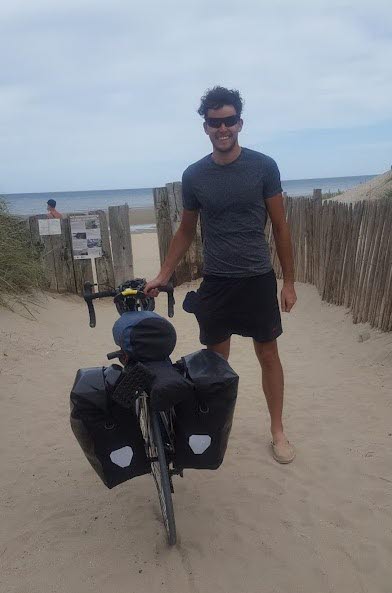Kevin Gildea, Lunds Tekniska Högskola, LTH
Vad behövs för att lyckas med ambitionen om ökad och säker cykling?

– The rise of motordom in our cities led to reductions in cycling numbers. This has proved counterproductive in terms of environmental sustainability, public health, and urban congestion. In the coming years we will see significant changes to our cityscapes. Efforts are underway to reduce motorised traffic and reclaim public space for active and sustainable transport modes. With this, unintended and potentially unforeseeable conflicts are likely to arise. To successfully increase cycling numbers while also enhancing safety, a comprehensive and multifaceted strategy is needed. Collaborative planning and policy will be required that simultaneously promotes cycling and ensures safety, requiring close collaboration between mobility and safety researchers.
Given the complexity of urban ecosystems, even the best-laid plans may encounter unforeseen safety challenges. In response, adopting a proactive assessment strategy, aligned with the principles of Vision Zero and the Safe System approach is ideal. This means not just reacting to incidents as they occur, but actively seeking out potential risk factors and mitigating them before they happen. Thoughtful use of technology can be helpful in this regard, and therefore, this is a focus of my research.
However, a proactive approach to safety, while fundamental, has its limitations, especially when dealing with the unpredictable nature of single bicycle crashes and falls from new micromobility forms. Therefore, my research also focuses on the biomechanics of injuries resulting from these types of incidents.
My name is Kevin Gildea and I’m a Postdoc at LTH. My research centres on the intersection of computer vision, deep learning, and multibody dynamics. It specifically focuses on leveraging these technologies for proactive road safety assessments and studying injury biomechanics, with a particular emphasis on protecting vulnerable road users such as cyclists.
I am leading a number of projects aiming to improve road safety for cyclists:
- Surrogate measures of safety for single bicycle crashes:
Funder: Trafikverket
Partners: LTH, VTI
Summary: This project aims to create an advanced cyclist tracking algorithm. Leveraging computer vision techniques and mathematical modelling, an algorithm will be developed for extracting safety-relevant cyclist movement details related to stability from video data. - How to implement bicycle streets in Swedish municipalities:
Funder: Trafikverket
Partners: LTH, VTI
Summary: The primary aim is to develop a systematic science-based approach for implementation and assessment of bicycle streets (cykelgator/cykelfartsgator), i.e., streets that facilitate mixed traffic with 30 km/h speed limits, parking restrictions, and guidelines that ensure equal priority for bicycles and motorised vehicles. - Single bicycle crashes as a result of failed interactions:
Funder: Trafikverket
Partners: LTH, VTI, Viscando
Summary: This project investigates single bicycle crashes resulting from an unsuccessful interaction with fixed objects in the infrastructure as well as with other road users. The project consists of a literature review, Strada analysis, behavioural observations using video analysis tools, work with measures that can reduce the risk of such accidents and their evaluation. - Video-based initialisation of computational human body models (KinePose):
Continuation of my PhD work on KinePose (https://kevgildea.github.io/KinePose/), applying and adapting the methodology to work with a variety of existing HBMs (multibody, finite element). Application of the pipeline to investigate the effects of pose, motion, and active response in injury biomechanics tasks including single bicycle crashes.

